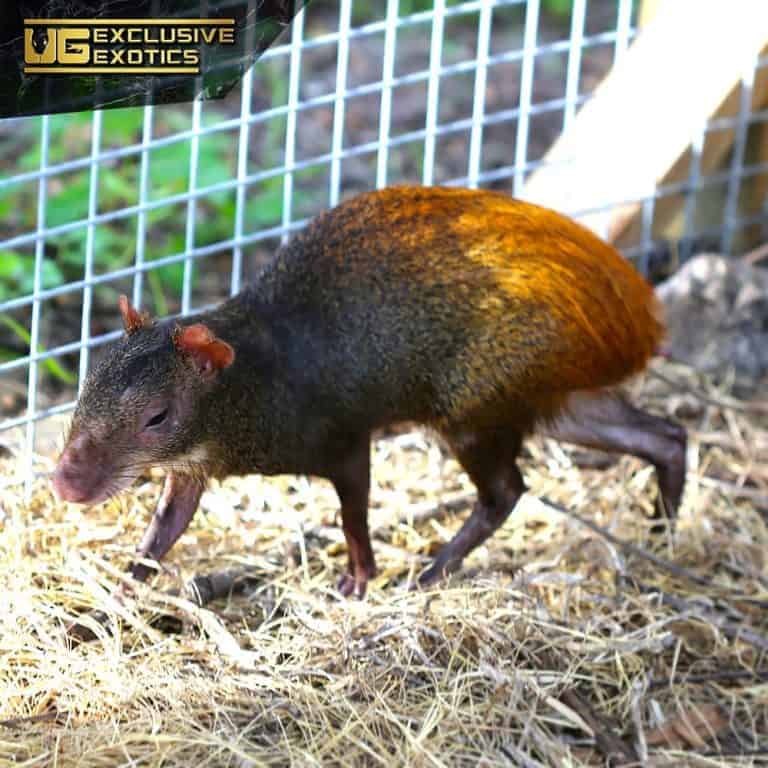

Territorial defense sometimes includes vicious fighting which results in serious wounds. When other agoutis enter a claimed territory they are driven off, usually by the male. Each pair occupies a territory of approximately 1-2 hectares which contain fruiting trees, and a source of water. The basic social unit of the agouti is made up of a pair that mate with one another for life. Status: wild 10.0 years Max Planck Institute for Demographic Research There is little information on lifespan in agoutis. Young born during the fruiting season have a substantially greater chance of surviving than those born during the off season. Offspring become completely separated from the mother upon the arrival of a new litter, because of parental aggression, or due to lack of food. The newborn are fully furred, their eyes are open, and they are able to run in their first hour of life (Smythe 1978). The female has its own den apart from the young. As the offspring grow, the mother relocates the litter to a larger den. The dens often exactly match the size of the young (Grzimek 1990). The females dig caves for their young or bring them to old lairs they constructed usually located in hollow logs, among tree roots, or under tangled vegetation. Average age at sexual or reproductive maturity (female).


Breeding season Populations typically breed throughout the year.Breeding interval Breeding interval is determined by fruit abundance.gonochoric/gonochoristic/dioecious (sexes separate).A litter normally contains two young, though there are sometimes three and four young have been recorded in captivity. Individuals in some populations of agoutis mate twice a year. During courtship, the male sprays the female with urine, which causes her to go into a "frenzy dance." After several sprays she allows the male to approach (Smythe 1978).Ĭentral American agoutis breed throughout the year, but the majority of the young are born during the time of year when fruit is most plentiful between March and July. Range mass 1.000 to 4.000 kg 2.20 to 8.81 lbĬentral American agoutis are monogamous.Females have four pairs of ventral mammae (Nowak 1999). They have short ears, and the hind foot has three toes with hoof-like claws (Nowak 1999). The body form of the Central American agouti is slender. The body length ranges from 415-620 mm and the tail is 10-35 mm. The hairs increase in length from the anterior to the posterior part of the body. The fur of the agouti is course yet glossy. In some individuals inconspicuous stripes may be present. The coat ranges from pale orange to several shades of brown or blackish dorsally, and yellowish to white ventrally. They often build dens and numerous sleeping spots in hollow logs, among limestone boulders, under roots of trees or other vegetation. Agoutis are closely associated with water and often found along the banks of streams, rivers and lakes. In Peru, they are confined to the Amazonian region where they are found in all parts of the low selva rainforest zone and many parts of the high selva zone (altitudes of up to 2,000 meters) (Nowak 1999). Dasyprocta punctata, commonly known as Central American agoutis, is found from southern Mexico to northern Argentina, and has been introduced to the Cayman Islands.Ĭentral American agoutis are found in forests, thick brush, savannas, and cultivated areas.


 0 kommentar(er)
0 kommentar(er)
